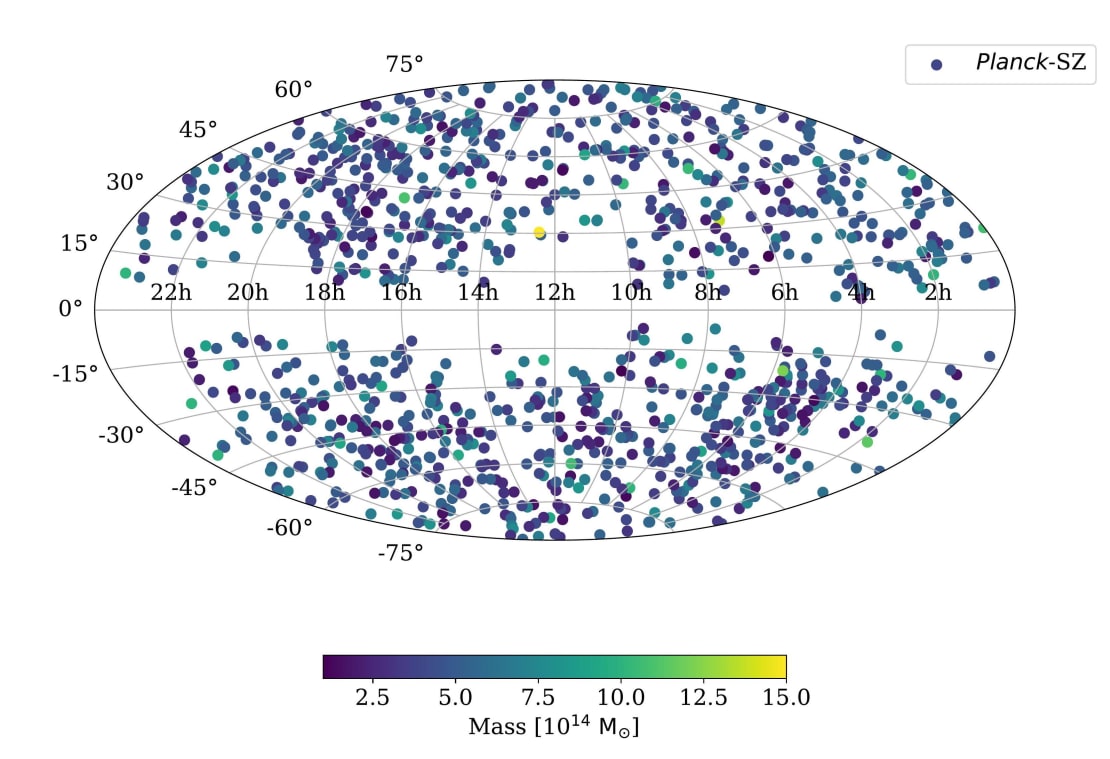At present, one of the long-standing astronomical mysteries is the origin of cosmic rays, high-energy charged particles hurtling through space at the speed of light. Upon entering the atmosphere, they interact with atoms and produce an air shower of secondary particles, including nearly massless subatomic particles called neutrinos. Although very little is known about high-energy cosmic rays of extragalactic origin, they are indirectly studied through high-energy neutrinos originating from the same environments. Because neutrinos can travel long distances unimpeded, they are ideal cosmic messengers that can be traced back to their source.
In a new study presented by the IceCube Collaboration, researchers looked at a sample of galaxy clusters as potential sources for neutrinos. Although no significant correlation between galaxy clusters and neutrinos was observed by IceCube, these results are the first and strongest limits on the population of galaxy clusters as potential neutrino sources. Their findings were published in a paper recently accepted by The Astrophysical Journal Letters.
Galaxy clusters, or large groups of galaxies, are the largest gravitationally bound objects in the universe. Their enormous size and magnetic fields provide the right conditions for neutrino production, leading physicists to suspect galaxy clusters as potential sources for both cosmic rays and neutrinos. This led researchers to the following question: Can galaxy clusters explain the majority of the neutrino flux observed by IceCube?
To address this question, researchers analyzed 9.5 years (2008–2017) of data taken by the IceCube Neutrino Observatory, which consists of more than 5,000 light sensors arranged in a three-dimensional grid one cubic kilometer deep in the South Pole ice sheet. The data set consisted mostly of detection events triggered by atmospheric neutrinos created in cosmic ray air showers in the upper atmosphere.
Since neutrino emission from individual galaxy clusters are hard to detect, the researchers adopted the “stacking” method of combining thousands of galaxy clusters and observing their cumulative signal. A catalog of 1094 galaxy clusters detected by the Planck mission was used and compared with the neutrino tracks in the same direction.

The researchers found no evidence of significant neutrino emission, but they did not completely rule out galaxy clusters as the prime candidates for neutrino emission.
“Under certain reasonable assumptions, we find that some of the most massive galaxy clusters do not contribute more than 10–15% of some of the highest energy neutrinos observed by IceCube,” said Mehr Un Nisa, a postdoctoral researcher at Michigan State University and lead on the analysis. “Our results are the first and the strongest limits on the population of galaxy clusters as potential neutrino sources.”
For future analyses, researchers can look more closely at subpopulations of galaxy clusters. With the completion of the next-generation neutrino telescope IceCube-Gen2, more data can be collected from objects that have lower masses and are further away.
“We can also learn more about these objects as data on clusters improves in other wavelengths, including X-rays and gamma rays,” said Nisa. “Finally, our limits will allow theorists to tune their models further and explore what factors determine the efficiency of galaxy clusters to confine and produce cosmic rays.”
+ info “Searching for High-Energy Neutrino Emission from Galaxy Clusters with IceCube,” IceCube Collaboration: R. Abbasi et al., The Astrophysical Journal Letters 938 (2022) 2, L11, iopscience.iop.org, arxiv.org/abs/2206.02054